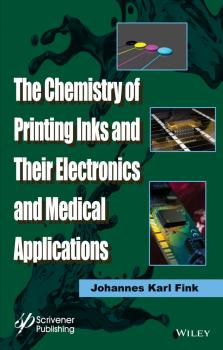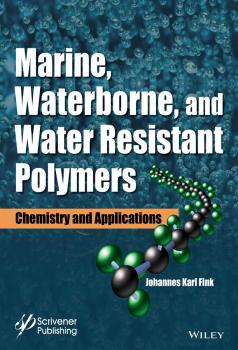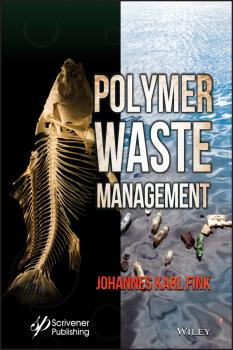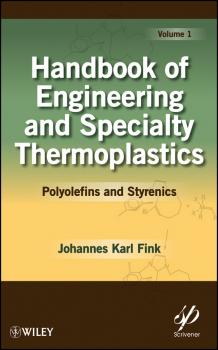Johannes Fink Karl
Список книг автора Johannes Fink KarlThe Chemistry of Printing Inks and Their Electronics and Medical Applications
This book focuses on the chemistry of inkjet printing inks, as well to special applications of these materials. As is well-documented, this issue has literallyexploded in the literature in particular in the patent literature. After an introductory section to the general aspects of the field, the types and uses of inkjet printing inks are summarized followed by an overview on the testing methods. Special compounds used as additives dyes, and pigments in inkjet printing inks are documented. The applications to the medical field – drug delivery systems, tissue engineering, bioprinting in particular – are detailed. The applications in the electronics industry are also documented such as flexible electronics, integrated circuits, liquid crystal displays, along a description of their special inks. The book incorporates many structures of the organic compounds used for inkjet printing inks as they may not be familiar to the polymer and organic chemists.
The Chemistry of Bio-based Polymers
An exhaustive and timely overview of renewable polymers from a respected chemist and successful author The recent explosion of interdisciplinary research has fragmented the knowledge base surrounding renewable polymers. The Chemistry of Bio-based Polymers brings together, in one volume, the research and work of Professor Johannes Fink, focusing on biopolymers that can be synthesized from renewable polymers. After introducing general aspects of the field, the book’s subsequent chapters examine the chemistry of biodegradable polymeric types sorted by their chemical compounds, including the synthesis of low molecular compounds. Various categories of biopolymers are detailed including vinyl-based polymers, acid and lactone polymers, ester and amide polymers, carbohydrate-related polymers and others. Procedures for the preparation of biopolymers and biodegradable nanocomposites are arranged by chemical methods and in vitro biological methods, with discussion of the issue of “plastics from bacteria.” The factors influencing the degradation and biodegradation of polymers used in food packaging, exposed to various environments, are detailed at length. The book covers the medical applications of bio-based polymers, concentrating on controlled drug delivery, temporary prostheses, and scaffolds for tissue engineering. Professor Fink also addresses renewable resources for fabricating biofuels and argues for localized biorefineries, as biomass feedstocks are more efficiently handled locally. Audience The Chemistry of Bio-based Polymers will be read by chemists, polymer and materials scientists, chemical, bio-based, and biomedical engineers, agricultural and environmental faculty and all those who work in the bioeconomy area. This book will be critical for engineers in a number of industries including food packaging, medical devices, personal care, fuels, auto, and construction.
Chemicals and Methods for Conservation and Restoration. Paintings, Textiles, Fossils, Wood, Stones, Metals, and Glass
Before the 1970s, most information concerning the conservation and restoration of paintings, wood, and archaeological artefacts were focused on the history of the artefacts, previous attempts of conservation, and the future use of these artefacts. The technical methods of how the restoration and conservation were made were dealt with only very briefly. Today, sophisticated methods of scientific analysis such as DNA are common place, and this encourages conservators and scientists to work together to work out the development of new methods for analysis and conservation of artefacts. This book focuses on the chemicals used for conservation and restoration of various artefacts in artwork and archaeology, as well as special applications of these materials. Also the methods used, both methods for cleaning, conservation and restoration, as well as methods for the analysis of the state of the respective artefacts. Topics include oil paintings, paper conservation, textiles and dyes for them, archaeological wood, fossils, stones, metals and metallic coins, and glasses, including church windows.
Metallized and Magnetic Polymers. Chemistry and Applications
This book focuses on the chemistry of metallized and magnetic polymers, as well as the special applications of these materials. After an introductory section on the general aspects of the field, the types and uses of these polymers are detailed, followed by an overview of the testing methods. The book is divided equally into two parts – metallized polymers and magnetic polymers – and both parts follow the same structure: All methods of fabrication Properties and methods of measurement including standard test methods and interface properties Fields of applications Environmental issues including recycling and biodegradable polymers
Marine, Waterborne, and Water-Resistant Polymers. Chemistry and Applications
This book focuses on the chemistry of marine polymers, waterborne polymers, and water-resistant polymers, as well as the special applications of these materials. After the chemistry of marine polymers and their types are discussed, the uses of these polymers are detailed, as well as various analytical and characterization testing methods. The book also emphasizes the polymers that are most environmentally-friendly along with their origin and industrial applications. The polymers from these 3 types serve a variety of industries including medical equipment and devices, outdoor coatings and corrosion protection, food packaging, saltwater and freshwater marine purposes, paper, and marine well application, to name just a few.
Additives for High Performance Applications. Chemistry and Applications
This book focuses on the chemistry of additives for high performance applications and a large number of chemical formulas are displayed in the text. The additives applications include: Analysis and separation techniques, such as high performance liquid chromatography, for example ionic liquids. Additives for electrical applications, such as capacitors, electrokinetic micropumps, lithium-ion batteries, and other battery types. Additives for solar cells for control of the active layer nanomorphology are documented as are additives for electrolyte membranes, fuel cells, such as membrane exchange humidifiers and coolant additives. Medical applications include high performance additives for the manufacture of scaffolds, controlled drug release, and nanofibers. Additives for lubricants including the deposit control, anti-wear additives, fluid loss control additives in drilling applications. Additives for concrete uses such as set retarders, curing accelerators, defoamers, permeability control additives, and corrosion protection additives.
3D Industrial Printing with Polymers
3D industrial printing has become mainstream in manufacturing. This unique book is the first to focus on polymers as the printing material. The scientific literature with respect to 3D printing is collated in this monograph. The book opens with a chapter on foundational issues such and presents a broad overview of 3D printing procedures and the materials used therein. In particular, the methods of 3d printing are discussed and the polymers and composites used for 3d printing are detailed. The book details the main fields of applications areas which include electric and magnetic uses, medical applications, and pharmaceutical applications. Electric and magnetic uses include electronic materials, actuators, piezoelectric materials, antennas, batteries and fuel cells. Medical applications are organ manufacturing, bone repair materials, drug-eluting coronary stents, and dental applications. The pharmaceutical applications are composite tablets, transdermal drug delivery, and patient-specific liquid capsules. A special chapter deals with the growing aircraft and automotive uses for 3D printing, such as with manufacturing of aircraft parts and aircraft cabins. In the field of cars, 3D printing is gaining importance for automotive parts (brake components, drives), for the fabrication of automotive repair systems, and even 3D printed vehicles.
Fuel Cells, Solar Panels, and Storage Devices. Materials and Methods
This book focuses on the materials used for fuel cells, solar panels, and storage devices, such as rechargeable batteries. Fuel cell devices, such as direct methanol fuel cells, direct ethanol fuel cells, direct urea fuel cells, as well as biological fuel cells and the electrolytes, membranes, and catalysts used there are detailed. Separate chapters are devoted to polymer electrode materials and membranes. With regard to solar cells, the types of solar cells are detailed, such as inorganic-organic hybrid solar cells, solar powered biological fuel cells, heterojunction cells, multi-junction cells, and others. Also, the fabrication methods are described. Further, the electrolytes, membranes, and catalysts used there are detailed. The section that is dealing with rechargeable batteries explains the types of rechargeable devices, such as aluminum-based batteries, zinc batteries, magnesium batteries, and lithium batteries. Materials that are used for cathodes, anodes and electrolytes are detailed. The text focuses on the basic issues and also the literature of the past decade. Beyond education, this book may serve the needs of polymer specialists as well as other specialists, e.g., materials scientists, electrochemical engineers, etc., who have only a passing knowledge of these issues, but need to know more.
Handbook of Engineering and Specialty Thermoplastics, Volume 1. Polyolefins and Styrenics
Utilizes an encyclopedic approach to cover the developments in polyolefins and styrenics during the last decade This book focuses on common types of polymers belonging to the class of polyolefins and styrenics. The text is arranged according to the chemical constitution of polymers and reviews the developments that have taken place in the last decade. A brief introduction to the polymer type is given and previous monographs and reviews dealing with the topic are listed for quick reference. The text continues with monomers, polymerization, fabrication techniques, properties, application, as well as safety issues. Providing a rather encyclopedic approach to polyolefins and styrenics, The Handbook of Engineering and Specialty Thermoplastics: Presents a listing of suppliers and commercial grades Reviews current patent literature, essential for the engineer developing new products Contains as extensive tradenames index with information that is fairly unique Concludes with an index of acronyms The Handbook of Engineering and Specialty Thermoplastics: Polyolefins and Styrenics provides a comprehensive reference for chemical engineers and offers advanced students with a textbook for use in courses on chemically biased plastics technology and polymer science.









